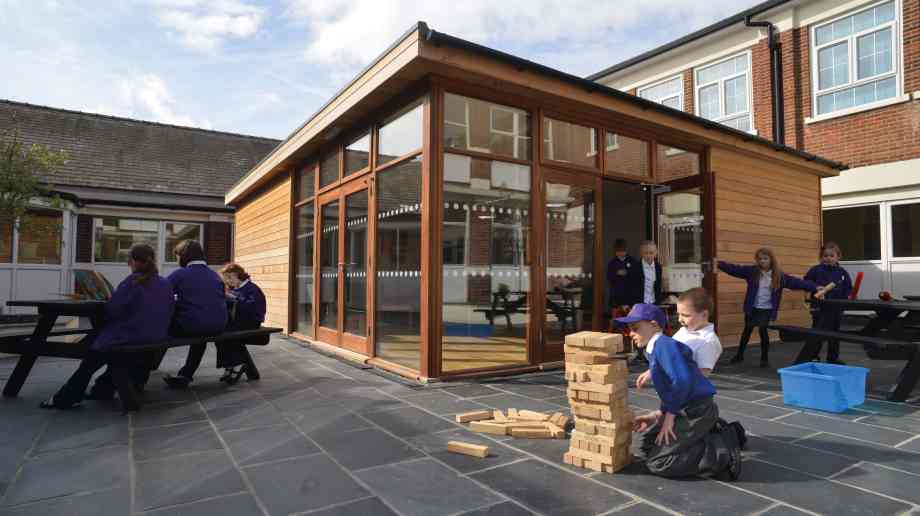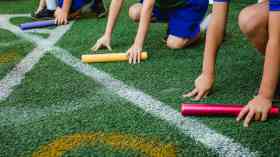
Cultivating the benefits of outdoor learning
While the majority of parents and schools recognise the benefits of their children learning about and from the outdoors, there is a dramatic reduction in time spent out of the classroom. BESA’s Mark Rosser invites member Mark Brown of TG Escapes to question why there is no improvement and offer his advice to schools on reaping the benefits of the outdoor learning environment.
You will have hopefully watched or heard about the most recent, ‘Free the Kids’ advert from washing detergent, Persil. The powerful commercial asks maximum‑security prisoners how they would feel if their two hour per day outdoor activity allowance was reduced to just one hour.
The response was unanimously passionate, with responses ranging from ‘anger would build’ and ‘it would be torture’ to the ‘potentially disastrous’. Yet on average, children spend only one hour a day outside; less than a maximum‑security prison inmate. Sadly, this has become so prevalent that it even has its own terminology: ‘Nature Deficit Disorder’. Initially coined by Richard Louv in his 2005 book, Last Child in the Woods, it has been suggested that this evolution can lead to a wide range of behavioural problems, which can impact upon education, health and general well-being.
The National Trust’s Natural Childhood report adds a further warning: “The growth of virtual, as opposed to reality-based play is not surprisingly having a profound effect on children’s lives; it has been called ‘the extinction of experience.”
The dangers
Firstly, looking at the dangers of this increasing trend, approximately 30 per cent of children aged between two and 15 are either overweight or obese (Health Survey for England 2008; the NHS Information Centre) and this is increasing significantly. According to the report ‘Epidemiology of vitamin D deficiency in children’, other physical health problems include vitamin D deficiency, leading to a rise in rickets, short-sightedness and asthma, and so the dangers and warnings continue. But is it all about children’s health? Child psychologist, Professor Tanya Bryon thinks not.
She said: “The less children play outdoors, the less they learn to cope with the risks and challenges they will go on to face as adults. Nothing can replace what children gain from the freedom and independence of thought they have when trying new things out in the open.”
Furthermore, Tom Gill, one of the UK’s leading commentators on childhood adds: “Natural places are singularly engaging, stimulating, life enhancing environments, where children can reach new depths of understanding about themselves, their abilities and their relationship with the world around them.”
Month on month, year on year, we all increasingly value the importance of our environment (less pollution and more recycling to name just two strands). We should all be aiming to become better environmental citizens: the notion that each of us is an integral part of a larger ecosystem and that our future depends on each one of us embracing the challenge and acting responsibly and positively toward our environment. It’s about making changes in our daily lives to be environmental citizens all day, every day.
Children don’t simply learn more or learn better when freed from their desks, they also learn differently, experiencing an impact cognitively, actively, interpersonally, socially and physically.
I imagine that everyone reading this article will concur. The issues and need for change are obvious. Taking science as an example, how can we expect our children to be excited by science, nature and biology if we don’t take them outside to actually experience it?
So what is stopping us?
From our research, the biggest barrier mentioned in The Learning Escape survey was the ‘pressure to cover other curriculum areas’ (45 per cent), with a ‘lack of staff understanding/training’ in second place (39 per cent). A ‘lack of funding’ also featured highly as a barrier (26 per cent). So even nature itself has become a commodity. Surprisingly, ‘poor facilities’ came very low down the list (only 11 per cent), with ‘lack of home support’ being listed by 16 per cent. Another commonly cited reason is heath and safety.
Antidotes to the modern world
When we spoke to schools with a high rate of outdoor learning, about the ‘secret to success’, those surveyed ranked a number of important contributing factors. Some of these included: having a whole school approach, giving children ownership, having an action plan, integration within the curriculum, having more time, staff passion, having experience of learning in this area, inclusion of all stakeholders, and opportunities for children to interact at first hand with real-life examples.
With these examples in mind, here is my ten-point plan for any school wanting to increase their outdoor learning.
Lead by example
The most important thing is that schools and Early Years settings lead by example. That means practising what you preach and for example, setting up recycling programmes, supporting Walk to School week and encouraging healthy, sustainable eating at lunchtime. Children learn by the example set by teachers, so in order to best engender a sense of environmental citizenship you must first set the best example.
Take the curriculum outdoors
While I appreciate the pressure on schools concerning results, assessment, the core curriculum and standards, teachers also recognise the huge potential of hands‑on‑learning. Taking maths as an example, the new curriculum, encourages the teaching of maths as interconnected topics, which lends itself to more practical activities. While the new programmes of study are set out on a year-by-year basis, schools now have the freedom of when to teach the content within each Key Stage and are not restricted to following strict schemes of work or classroom based study.
When planning the lessons surrounding a particular learning objective always consider how the outside can support this. In primary maths, can the children measure the area of the playfield, draw a plan of the school grounds and from there calculate its size? Or, could they weigh and analyse the amount of grain that the school pet rabbit eats over a two-week period. Plan lessons with practical, outdoor activities to get the best of both worlds (natural interaction and curriculum learning).
Encourage them to ‘pass it on’
Consider putting together a fact-sheet for parents on the subjects you’re covering in lessons, to help them continue the learning and exploration at home.
Support a scheme like Eco-Schools
Eco-Schools is an international award programme that guides schools on their sustainable journey, providing a framework to help embed these principles into the heart of school life. There is a framework to work through, rewarding best practice, as well as teaching and learning resources to help you on your journey.
Good environmental citizenship
Saying well done to children that play an active role in green practice helps them to see the benefits of good environmental citizenship. Consider introducing competitions and campaigns that create a focus on particular areas, as well as day-to-day learning. Make environmental citizenship fun.
Addressing health and safety
The concern over the dangers and, in particular, road safety is another barrier to spending more learning time outside.
The number of children killed on our roads has fallen dramatically, from almost 700 deaths in 1976 to just 81 in 2009. But these raw figures conceal the true reason behind the drop in deaths: that nowadays children are rarely allowed to venture outdoors (Mayer Hillman’s study One False Move).
Giving children the freedom to explore natural environments inevitably incurs an element of danger.
Yet we should put this in perspective: three times as many children are taken to hospital each year after falling out of bed, as from falling out of trees. And remember, the Health and Safety Executive is an active advocate of sensible risk.
Consider how you bridge the gap
Think about where you teach; does it need to be indoors or could you use an outdoor space? Can you structure lessons to involve both indoors and outdoors? For example, use the first half of the lesson to set students the task of researching the theory behind an experiment, before getting them to put it into practice outdoors.
Avoiding additional expenditure
Many believe they cannot experience outdoor learning unless they are in a nature reserve, have the right pair of binoculars, or are wearing the correctly endorsed clothes. As a result, ‘nature’ is often seen as somewhere to travel to, as opposed to something we are all surrounded by. My first recommendation to schools is to step back and consider what is accessible without asking parents to fund it or dip into budgets.
Plants and animals are everywhere. With supervision, environmental surveys could be carried out in the street outside the school or in a home environment with parents and other family members. Parents, or local scientists and environmentalists could even be invited into the school grounds to demonstrate the wonder of the world we live in.
Classrooms and buildings
When considering a building project, leading by example is, again, key. Rather than instantly deciding on a portable classroom, why not consider an eco-classroom that uses the best, sustainable materials? Think about positioning and design to allow it to bridge the gap between indoors and outdoors. If you’re having a new library constructed, why not build it from wood with bi-fold doors so children can enjoy reading outdoors? Or consider a science building that enables children to run experiments both inside and outside?
Staff training
This is easily solved. There are numerous sources of information for schools to dip into for advice and ideas such as the Council for Learning Outside the Classroom and books such as School Leader and Teacher Insights into Learning Outside the Classroom in Natural Environments Published by Natural England.
It is important that schools work with what they have to make the most of existing equipment and outdoor space and lead through example, involving children at each stage. A part of this process can then be identifying areas for improvement and support with fundraising for projects.
If staff can be shown how to include outdoor time within curriculum learning then it will lead them to make more informed choices about facility development needs and priorities. Importantly, and perhaps firstly, staff need to be encouraged to understand more about their outdoor space and the ways in which they should be encouraging their children to ‘get outside and use it’. From the products we sell you can see the reconnection of pupils to nature and how the natural light impacts on the learning outcome. The opportunities are abundant, and all around us.
Further Information
www.besa.org.uk
www.tgescapes.co.uk
Latest News
27/11/2025 - 11:53
Ofqual has published revised statistics on access arrangements for GCSEs, AS and A levels, alongside new research into the role of time pressure in assessment.
26/11/2025 - 15:22
The announcement follows an earlier pledge of £10 million in funding to provide every primary school in England with a library by 2029.
26/11/2025 - 10:18
The Diets Toolkit recommends that governments introduce more plant-based options in schools, alongside hospitals and other public institutions,
25/11/2025 - 13:05
New data from The Careers & Enterprise Company (CEC) finds that around two-thirds of businesses believe a two-week block of work experience is too time-consuming and offers too little benefit.
25/11/2025 - 12:57
The Youth Sport Trust has launched its latest Class of 2035 Report, warning that unless urgent action is taken to increase physical activity among children, this generation will face poorer health and outcomes.







